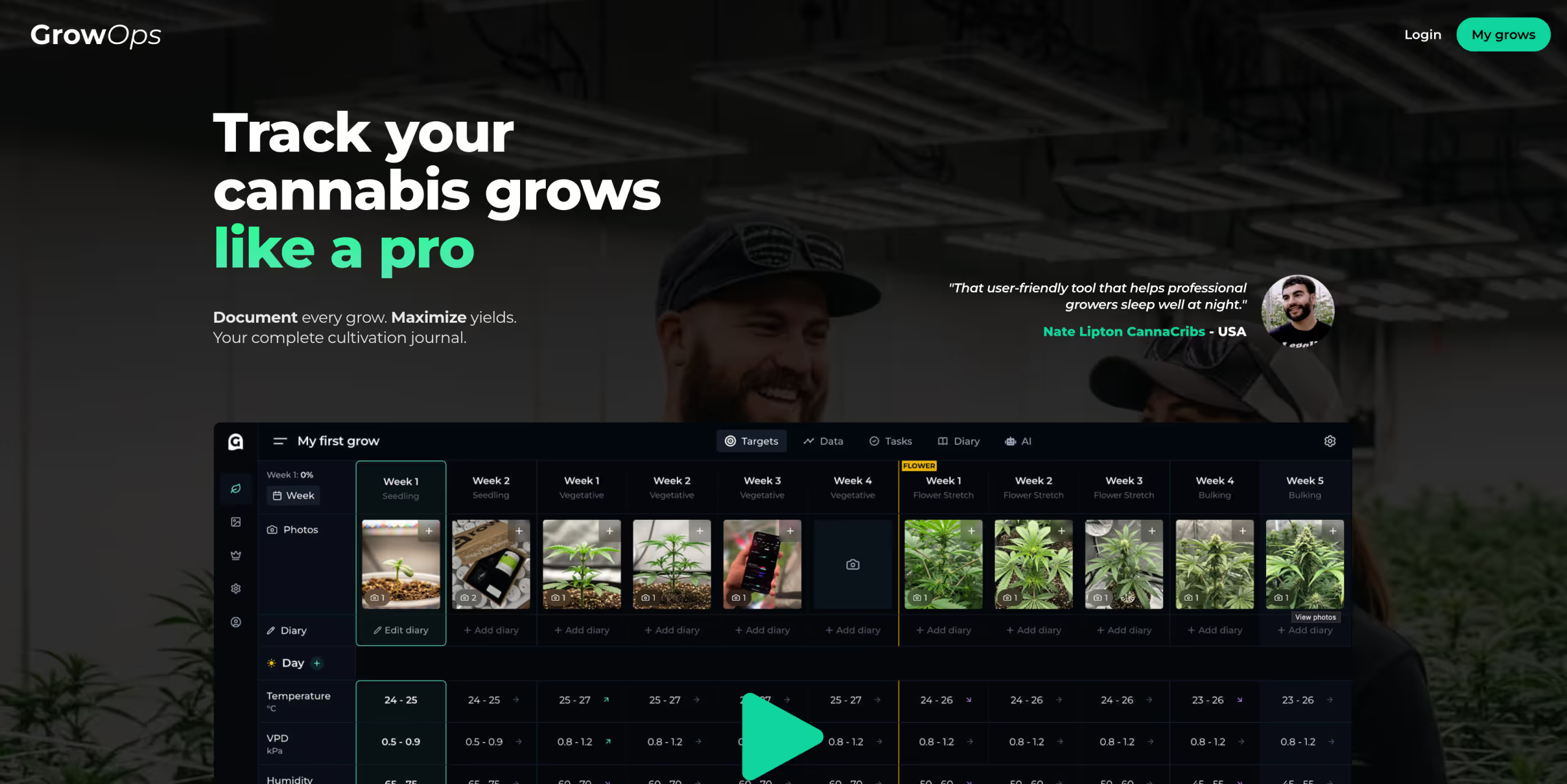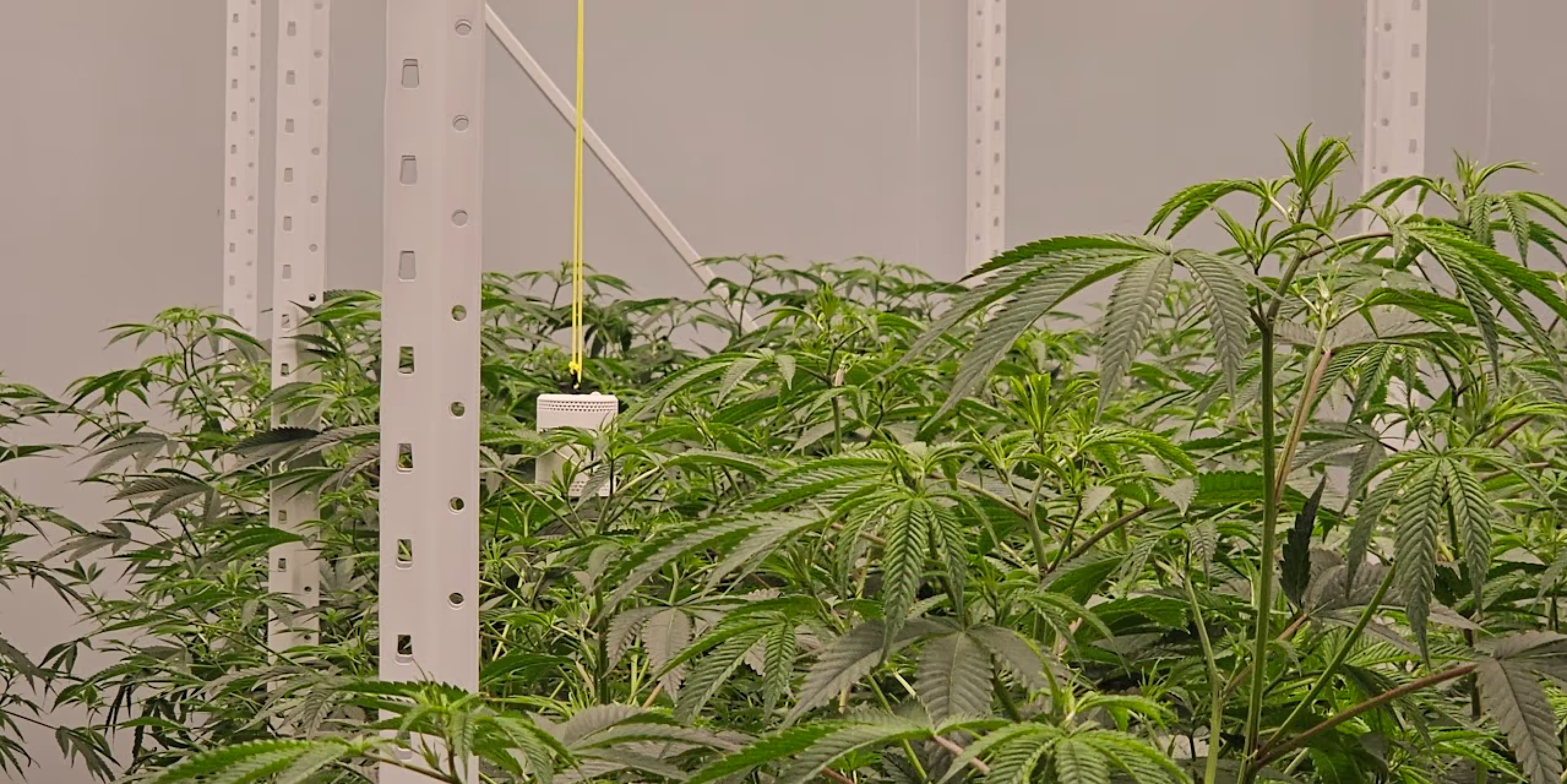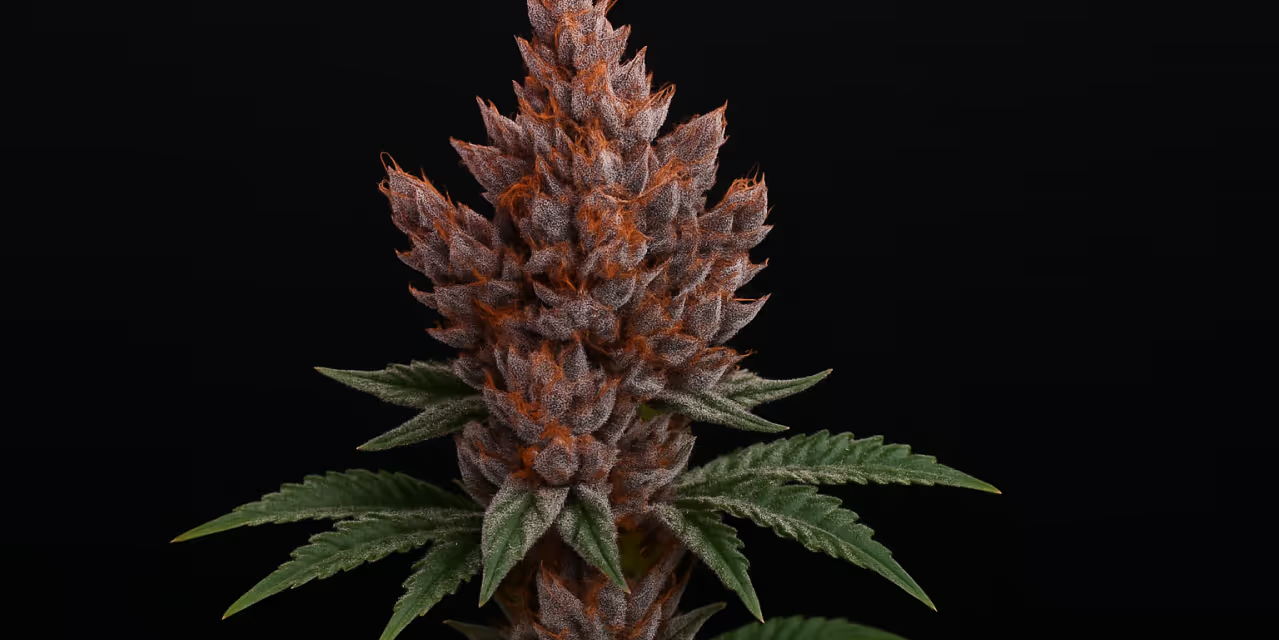Discover the best VPD for seedlings to optimise your grow


Welcome to the first piece in our mini-series, where we dive into the ideal Vapour Pressure Deficit (VPD) values for cannabis cultivation, focusing on the pivotal stages of plant growth.
Today, we're zeroing in on the seedlings – the foundation of a thriving indoor grow. For indoor growers, understanding the ideal VPD for seedlings is beneficial and crucial for ensuring your cannabis plants start their journey off right.
VPD can feel complex, but it's just a measure that combines temperature and relative humidity to influence your plant's ability to transpire and take up essential nutrients.
Getting this balance right for seedlings means the difference between merely surviving and truly thriving. The right VPD for seedlings creates an environment that optimises moisture levels, air temperature, nutrient uptake, etc, setting the stage for healthy plant growth.
But why is this so important, and what happens when delicate seedlings are subjected to less-than-ideal conditions?
Stay tuned as we uncover the science behind VPD, its impact on your seedlings, and how you can master this element to ensure your plants thrive from the get-go.
Disclaimer: Any information given on this site is for educational purposes only. Please ensure if you’re growing cannabis, you’re doing so in accordance with the law and subject to appropriate permissions and licenses of the applicable country.

Understanding Vapour Pressure Deficit (VPD) for Seedlings
When we talk about vapour pressure deficit in the context of cannabis seedlings, we're essentially discussing the delicate balance between air moisture and plant health.
VPD is a critical indicator
It helps growers understand how effectively their cannabis plant seedlings can transpire and take up nutrients.
Temperature and relative humidity
This balance is not just about keeping the seedlings wet or dry; it's about managing how much moisture they lose to the air, which is directly influenced by the surrounding temperature and relative humidity levels.
Transpiration, how plants release water vapour from their leaves into the air, is vital for seedlings. Through this process, they draw up water from their roots, bringing along essential nutrients required for growth.
Vapour pressure deficit affects this process by governing the potential for air to 'pull' this water vapour from the leaves.
If the VPD is too high
This indicates very dry air and low relative humidity. Seedlings can transpire too quickly, losing water faster than they can replace it, leading to stress and impaired growth.
If the VPD is too low
This means the air is too moist, with high relative humidity. The seedlings may not transpire enough, hampering the uptake of nutrients and making them susceptible to diseases.
For cannabis seedlings, the ideal VPD range lies between 0.5 to 0.7 kPa (kilopascals).
Within this range, the interplay between temperature and relative humidity creates an optimal environment for seedlings to maintain adequate transpiration rates.
This ensures they are neither losing water too quickly nor holding onto too much moisture, facilitating optimal nutrient uptake and healthy growth.
By keeping the grow room's temp and humidity levels within this optimum VPD range, growers can support their cannabis plants’ seedlings in establishing a strong foundation for vigorous plant growth in the vegetative stage and flowering stage.
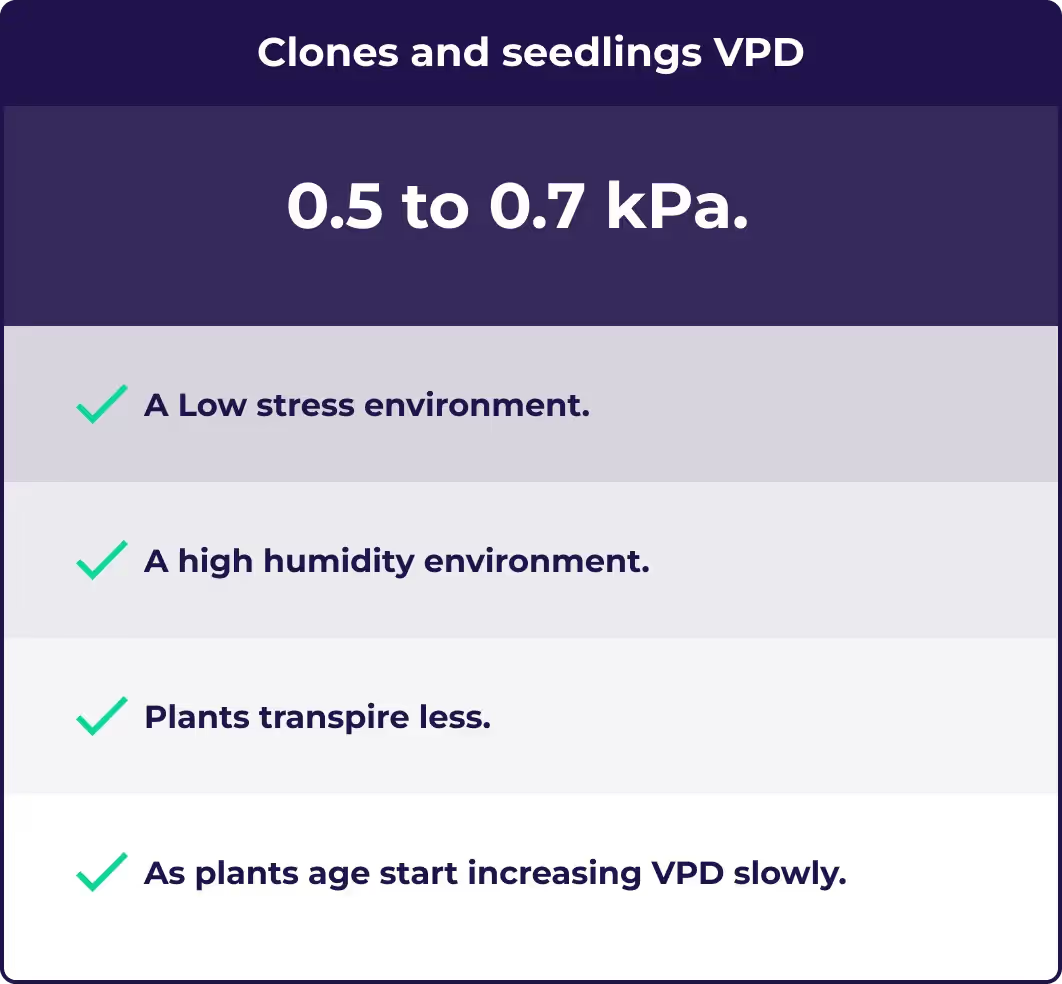
The science behind VPD and seedling growth
Understanding the intricate balance between vapour pressure deficit, leaf temperatures, and ambient temperature is crucial for optimising the health and growth of cannabis seedlings.
VPD isn't just a measure of dryness in the air; it's a dynamic indicator that reveals the potential for water vapour to move from the plant leaf to the surrounding air, a fundamental process for plant life known as transpiration.
The science behind VPD hinges on the principle of vapour pressure, which is about how much moisture air can hold at a certain temperature before it becomes saturated and condenses back into liquid.
The 'deficit' in VPD represents the difference between the amount of moisture currently in the air and the maximum amount it can hold (saturated vapour pressure).
Plant transpiration is crucial
Especially for seedlings, as it drives the uptake of water and essential nutrients from the soil, which are then transported throughout the plant.
This movement of water also helps to cool the plant through evapourative cooling, which is particularly important for regulating leaf temperatures.
VPD heavily influences the rate of transpiration; a higher VPD indicates drier air, promoting more transpiration, while a lower VPD suggests more humid conditions, reducing the rate of water vapour release from the plant.
The interplay between leaf temperature and air temperature significantly impacts VPD.

Leaf surface temperature
Leaf temperature is not always identical to air temperature; it can be influenced by various factors, including light intensity, ambient room temperature, and the plant's transpiration rate.
When leaf temperature rises, the rate of transpiration increases, assuming the air is not fully saturated with moisture.
This is where VPD comes into play; an optimal VPD ensures that even if leaf temperatures increase, the air around the leaf can still accept the transpired water vapour, preventing the leaf from overheating and ensuring continuous nutrient uptake.
Maintaining an optimal VPD for seedlings is particularly crucial as their root systems are not yet fully developed, and their leaves are more delicate.
The ideal cannabis seedling VPD is typically between 0.5 to 0.7 kPa and supports a balanced plant transpiration rate. Setting your plants up perfectly for the vegetative stage.
This balance ensures seedlings can efficiently uptake water and nutrients without the risk of water stress or nutrient burn, which can occur when transpiration rates are too high or too low, respectively.
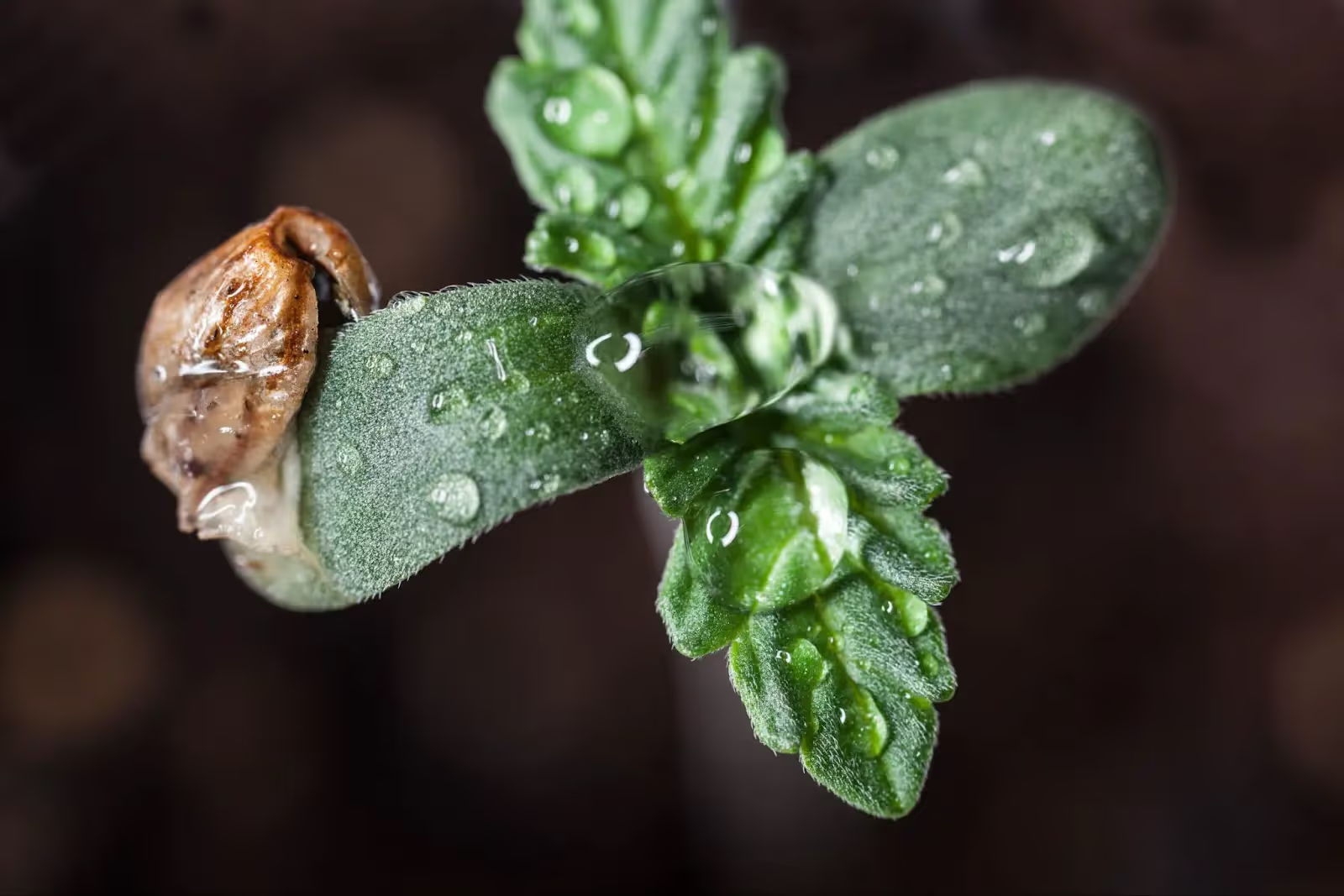
Scientific evidence
This study titled "Minimising VPD Fluctuations Maintains Higher Stomatal Conductance and Photosynthesis, Resulting in Improvement of Plant Growth in Lettuce" suggests that stable VPD conditions could benefit seedling development by supporting better gas exchange and growth performance.
The science of VPD reveals the critical balance required for seedling growth, emphasising the need for careful monitoring and control of air and leaf temperatures and relative humidity to promote healthy, vigorous cannabis plants.
Understanding and applying these scientific principles optimises your cultivation environments to ensure your seedlings thrive.

Consequences of suboptimal VPD for seedlings
Navigating the delicate balance of Vapour Pressure Deficit (VPD) is crucial for the healthy growth of cannabis seedlings. When VPD levels stray from the optimal range, the consequences can significantly hinder the development and vitality of these young plants.
Understanding the repercussions of suboptimal VPD levels is essential for growers aiming to cultivate vigorous cannabis plants.
At the heart of the issue, incorrect vapour pressure deficit levels disrupt the seedlings' ability to transpire effectively. Transpiration, a critical process where plants release water vapour through their leaves, is intimately tied to nutrient uptake.
When VPD is too high
Indicating overly dry air, seedlings can transpire excessively. This rapid loss of water not only risks dehydrating the plant but can also lead to nutrient burn.
This occurs because the plant absorbs nutrients faster than it can use them, leading to a toxic accumulation of nutrients within the plant tissues.
When VPD is too low
This means the air is too humid, and seedlings transpire less efficiently. This reduced transpiration rate slows down the movement of water and nutrients from the roots to the rest of the plant.
The damp conditions on the leaf surface can also become breeding grounds for pathogens, making the seedlings more susceptible to diseases such as powdery mildew and bud rot.
These conditions not only stunt growth but can also compromise the plant's overall health, leading to weakened defences against pests and diseases.
Nutrient imbalances
Nutrient deficiencies or toxicity is another significant concern with suboptimal vapour pressure deficit levels. Plants rely on a steady flow of water from the roots to the leaves to transport essential nutrients throughout their system.
An imbalance in this flow, caused by incorrect vapour pressure deficit levels, can disrupt the distribution of nutrients, leading to deficiencies or toxicities.
For instance, calcium, an essential nutrient for plant development, relies on transpiration to move within the plant. Inadequate VPD levels can hinder this process, resulting in calcium deficiencies that manifest as stunted growth and deformed new leaves.
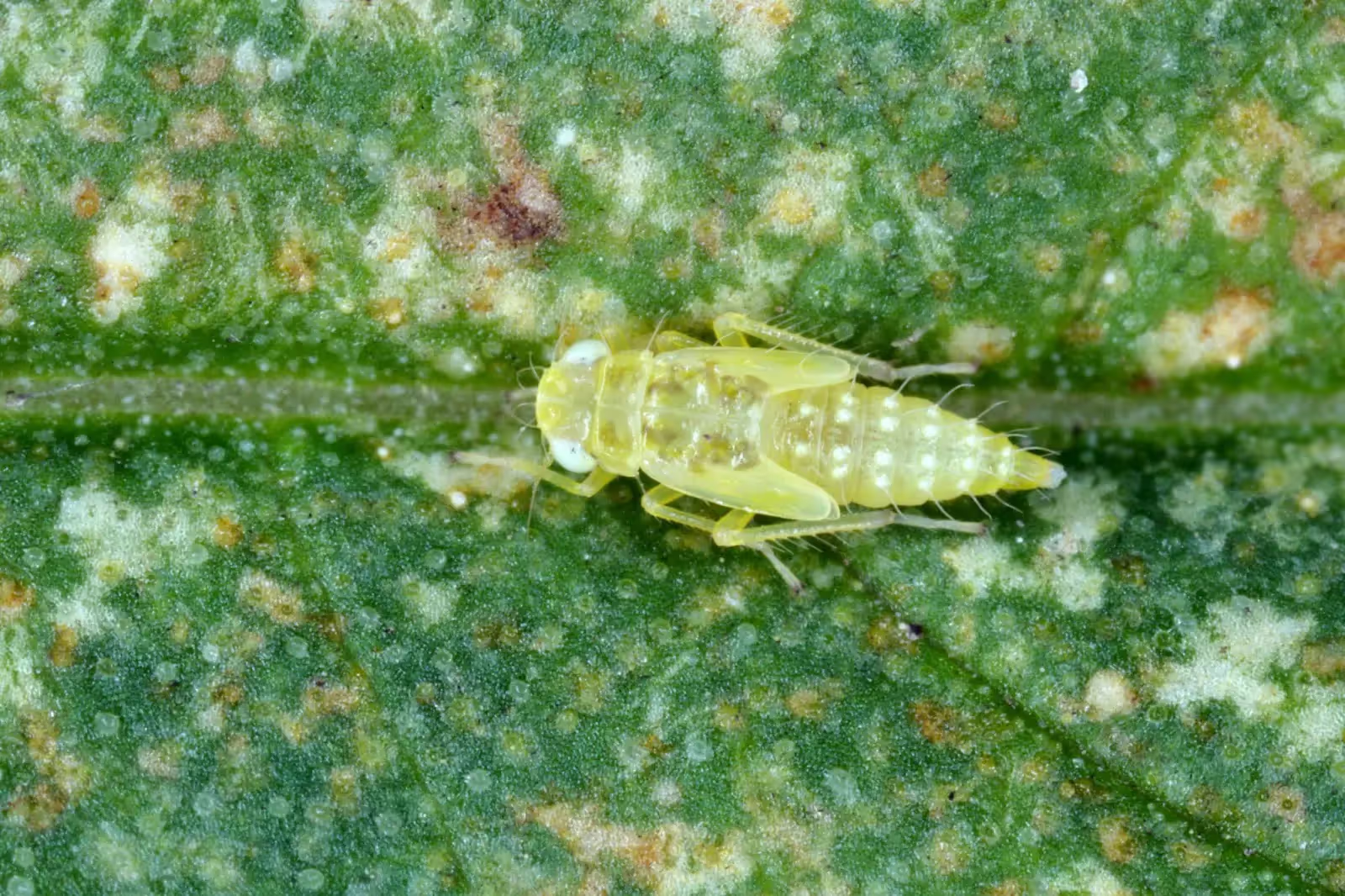
Pests
Moreover, the stress induced by suboptimal vapour pressure deficit conditions can make seedlings more attractive to pests. Stressed plants often emit signals that can be detected by pests such as spider mites and aphids, making them more vulnerable to infestations.
These pests damage the plants by feeding on them and can also spread diseases, further compounding the problems the seedlings face.
In summary, maintaining the correct VPD levels is paramount for the health and growth of cannabis seedlings.
Deviations from the ideal VPD range can lead to a cascade of issues, including stunted growth, nutrient imbalances, and increased vulnerability to pests and diseases.
By understanding the science behind these problems, growers can take proactive steps to monitor and adjust their growing environments, ensuring their seedlings have the best possible start.
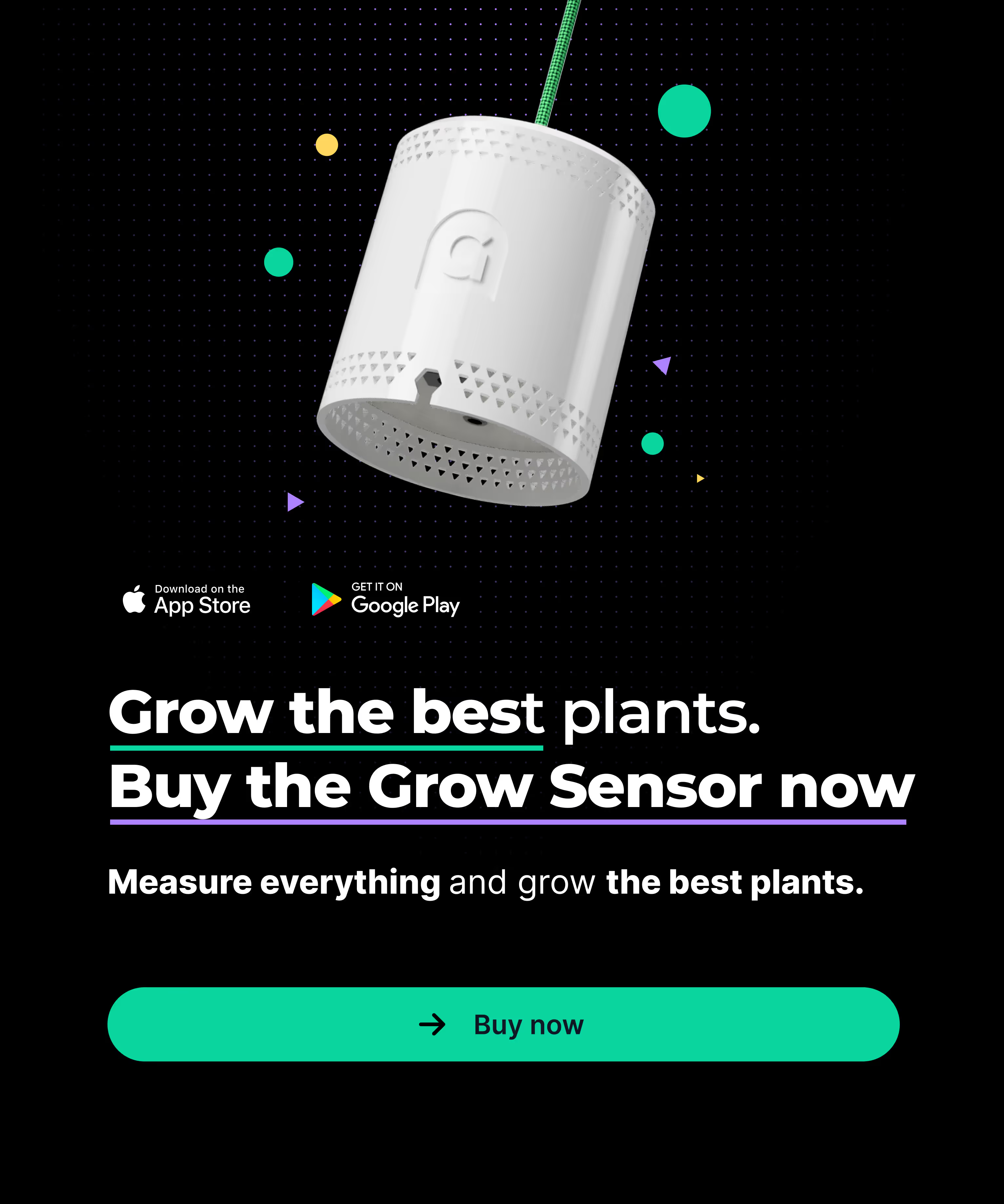
Seedling VPD troubleshooting guide
Navigating VPD for cannabis seedlings can be a nuanced process, but with the proper knowledge and tools, you can create the optimal environment for your plants to thrive.
Here’s a practical guide to monitoring and adjusting VPD, ensuring your seedlings receive the best possible start and you see maximum plant growth.
Step 1: Understanding your environment
Begin by assessing the current conditions in your grow room. A grow room monitor or digital hygrometer can be used to measure relative humidity, and an accurate thermometer can determine ambient temperature.
Remember, the goal is to achieve a consistent vapour pressure deficit within the optimal VPD range for seedlings, which typically falls between 0.8 to 1.2 kPa.
Step 2: Calculating VPD
Use a VPD chart for seedlings or a seedling VPD calculator (like our ultimate VPD calculator and calendar!) to input your measured temperature and humidity levels.
These tools will help you determine the current VPD in your grow area, allowing you to understand how far you are from the optimal range.
Step 3: Adjusting humidity and temperature
If your VPD is too high (air too dry), increase the relative humidity using a humidifier.
On the other hand, if the VPD is too low (air too moist), a dehumidifier can help remove excess moisture from the air.
Maintain a consistent temperature within the grow room using heaters or coolers as needed, aiming for the ideal temperature range that complements your humidity adjustments to achieve the desired VPD.

Step 4: Monitoring leaf temperature
The temperature of leaves can differ from ambient grow room temp and significantly impact leaf VPD. An infrared thermometer can be used to measure leaf temperature, ensuring they align with the ideal conditions for seedling growth.
Adjust lighting intensity or use fans to circulate air and manage leaf temperatures effectively.
Step 5: Continuous monitoring and adjustment
VPD can fluctuate with changes in the ambient room temp and humidity levels. Regular monitoring, ideally using a grow room sensor or by using a hygrometer and thermometer, is essential.
Automated systems can offer consistent monitoring and adjustment, ensuring the grow environment remains within the ideal VPD range for seedlings.
Common VPD-related problems and solutions
High VPD (dry air)
Besides using a humidifier, ensure your grow room is well-sealed (if you are using CO2) to prevent dry outside air from entering. Grouping plants closer can also increase local humidity through their collective transpiration.
Low VPD range (high humidity)
To counter a lower VPD range, improve ventilation to increase air circulation. This can be achieved by using exhaust fans or opening vents to allow moist air to escape, making room for drier air that can absorb more moisture from the plants.
By following this step-by-step guide and being attentive to the needs of your cannabis seedlings, you can navigate the complexities of VPD.
This will help prevent common issues and ensure your seedlings grow into healthy, vigorous plants, setting a solid foundation for the rest of their growth stages.

Seedling VPD chart: A visual guide
Navigating the optimal vapour pressure deficit for your cannabis seedlings just got easier with a dedicated VPD chart for the seedling stage.
This visual guide is designed to help growers maintain the perfect balance between ambient temperature and relative humidity, ensuring your seedlings thrive in an environment tailored to their growth needs.
A VPD chart acts as a roadmap, displaying the ideal VPD range for seedlings, usually between 0.5 to 0.7 kPa.
By cross-referencing the current temp and humidity levels in your grow room, you can determine whether your environment falls within the optimal VPD range for seedling health.
This immediate visual feedback makes adjusting your grow room's conditions easier, ensuring your seedlings are always in their comfort zone.
Integrating a VPD chart into your daily growing practices can significantly enhance your ability to monitor and adjust the environmental conditions.
Save the chart to your phone or computer for quick reference. Regularly check your temperature and humidity setpoints against the chart, especially after changing your grow room's environment, such as adjusting the lighting or ventilation.
This proactive approach allows for continuous fine-tuning, ensuring that your cannabis seedlings experience the ideal VPD for optimal growth and development.
By keeping the VPD chart as a central tool in your growing toolkit, you'll be equipped to provide your seedlings with the best possible start.

Monitor VPD with the Grow Sensor
Choosing the right gear for monitoring VPD in indoor cannabis growing is crucial.
If you're just starting out or on a tight budget, simple hygrometers and thermometers can do the job by giving you the basic temperature and humidity levels to monitor your plants' initial growth stages.
For those looking for more advanced options and wanting to take their growing to the next level, devices like the Grow Sensor are where it’s at to help you maintain appropriate VPD levels.
Grow room monitors provide live data tracking and the convenience of remote access through apps or software. Get notified about any shifts in your grow space's conditions to enable you to fine-tune your environment with precision.
The Grow Sensor offers advanced features and is engineered to track a range of environmental elements when positioned at the canopy level.
Along with measuring temperature and sensing relative humidity, the Grow Sensor will calculate VPD for you. Checkout it’s other awesome features:
- Integrated carbon dioxide measurement
- Continuous light measurement with PPFD and full-spectrum Par sensors
- Daily Light Integral (DLI) capability
- Leaf Surface Temperature (LST) sensing and leaf VPD calculation.
- Dew point tracking
- Soil analysis with an optional probe for EC, moisture, and temperature
- Data for implementing crop steering
- Support for day and night photoperiods
- Compatibility with iOS, Android, and an upcoming desktop app
- Durable construction with offline data logging
- Versatile connectivity, including long-range Wi-Fi
- Large battery life and USB charging
- Customisable alerts and an easy-to-use app offering you precise, up-to-the-minute information.
The Grow Sensor’s capability to directly measure VPD and even VPD considering leaf surface temperature allows the Grow Sensor to assist in establishing perfect conditions for your plants, which is crucial for their well-being and productivity.
No matter your experience level, selecting appropriate vapour pressure deficit management tools can significantly influence the health and output of your cannabis crops.
Takeaways
For cannabis growers, grasping the significance of vapour pressure deficit for your seedlings is a cornerstone of successful cultivation.
The delicate balance between air temperature and relative humidity shapes the very foundation of your plants' early life stages, influencing everything from nutrient uptake to transpiration rates.
By meticulously maintaining the appropriate VPD range, growers not only safeguard their seedlings against the common pitfalls of plant stress and disease but also set the stage for vigorous, healthy plants in the next stage of growth.
This knowledge isn't just beneficial—it's transformative, turning potential challenges into opportunities to ensure optimal plant growth and thriving cannabis plants.
As you apply these insights to your grow room, each adjustment brings you closer to growing the best plants.
Happy growing!









.avif)
